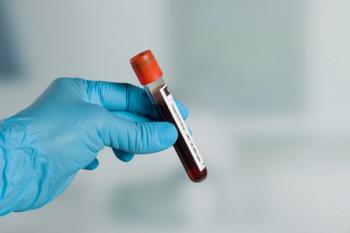
Which Supplements Lead to Lower Blood Pressure?
Diet-driven etiology in hypertension includes vitamin deficiencies, high salt and alcohol consumption, and low fruit, vegetable, dairy, and oily fish consumption.
Hypertension strikes 90% of individuals in their lifetimes, causes 7.6 million premature deaths globally on an annual basis, and leads to a loss of 92 million disability-adjusted life years.
The
Hypertension’s diet-driven etiology includes vitamin deficiencies, high salt and alcohol consumption, and low fruit, vegetable, dairy food, and oily fish consumption.
A multitude of studies has focused on dietary supplements and nutraceuticals—generally antioxidants with highly positive tolerability and safety profiles. Now, a team of researchers has reviewed the available research on nutraceuticals’ effects on blood pressure in a new study published online in the British Journal of Clinical Pharmacology.
The study collated English-language randomized, controlled trials and meta-analyses published between 1990 and 2015.
Here are 3 of the study authors’ major findings.
1. Olive oil, cocoa flavonoids, tea, and garlic can help lower blood pressure
The EPIC and PREDIMED trials found that increased polyphenol-rich olive oil consumption, which is part of the Mediterranean diet, can decrease systolic blood pressure (SBP) by 11 mmHg and diastolic blood pressure (DBP) by 4 mmHg.
Cocoa flavonoids have antioxidant and anti-inflammatory properties, improve nitric oxide metabolism, and decrease overall risk of cardiovascular risk.
Consumption of 2 to 6 cups of tea for 4 to 24 weeks reduces blood pressure by about 2 mmHg, with greater benefit seen with longer use.
Garlic-derived polysulfides can also decrease SBP by 9.1 mmHg and DBP by 3.8 mmHg.
2. Increasing potassium intake can be benefit blood pressure
Doubling potassium intake reduces SBP by 4 mmHg to 8 mmHg and DBP by 2.5 mmHg to 4 mmHg in hypertensive subjects.
Higher potassium consumption (such as the recommended 4700 mg/day) lowers the risk of cardiovascular and cerebrovascular accidents, type 2 diabetes, left ventricular hypertrophy, heart failure, and cardiac arrhythmias. That's good news, but patients with kidney disease should avoid increasing potassium.
3. Hypertensive patients can boost their vitamin C, fiber, and coenzyme Q10 levels with supplementation
Hypertensive patients tend to have lower vitamin C serum levels, and supplementation is associated with a 4.8+/-1.2 mmHg decrease in SBP.
Soluble fiber can decrease SBP and DBP by 7.5 mmHg and 5.5 mmHg, respectively, with 40 to 50 grams per day of mixed fiber.
Coenzyme Q10, also known as ubiquinone, is an antioxidant that reduces oxidative stress, regenerates other vitamins and antioxidants, and reduces low-density lipoprotein oxidation. Coenzyme Q10 decreased SBP by 11 mmHg and DBP by 7 mmHg after 4 weeks of treatment.
The study authors called for further research on the combined effects of these nutraceuticals and their cost-effectiveness and risk-benefit ratio in the low-risk general population.
Newsletter
Stay informed on drug updates, treatment guidelines, and pharmacy practice trends—subscribe to Pharmacy Times for weekly clinical insights.












































































































































































































